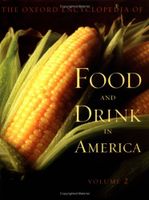Label
All
0
Clear all filters
Toast
Appears in
Published 2004
Bread becomes toast in the course of a complex series of chemical reactions to dry heat that includes the caramelization of sugars and the breakdown of starches, known collectively as the Maillard reaction. The ancient Egyptians are credited with the discovery of yeast leavening, and they are assumed to have been the first to brown the resulting loaves in a fire—that is, to make toast. The English have made the most extensive use of the practice in their cookery. In medieval times, toast frequently appeared at the table in the form of sops and sippets—relatively small pieces of toast used for dipping, mopping, and topping with various meats and sauces. In the Victorian era “toast water” was used as a folk tonic. Although it is a dish unto itself at breakfast and tea time, toast plays a supporting role in classics of home cooking such as creamed tuna or chipped beef on toast, the restorative milk toast, fricassee or stew, and in the shape of garnishing points or croutons.
Part of
Advertisement
Related Recipes
-
-
-
-
Related Reference
-
-
-
-
Advertisement
The licensor does not allow printing of this title



